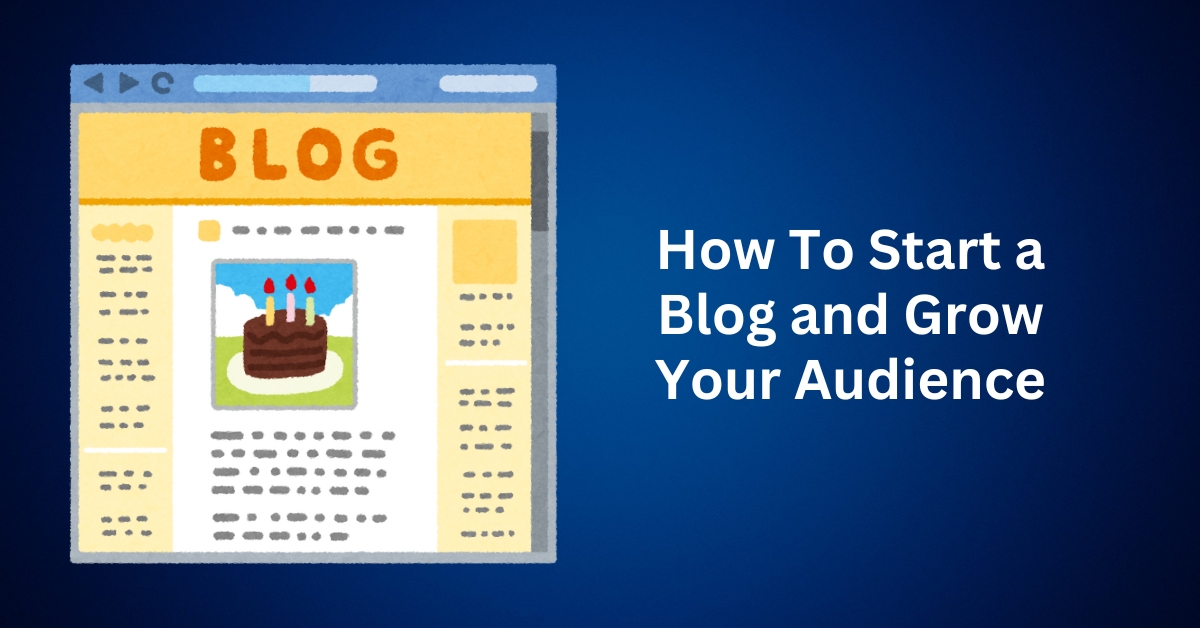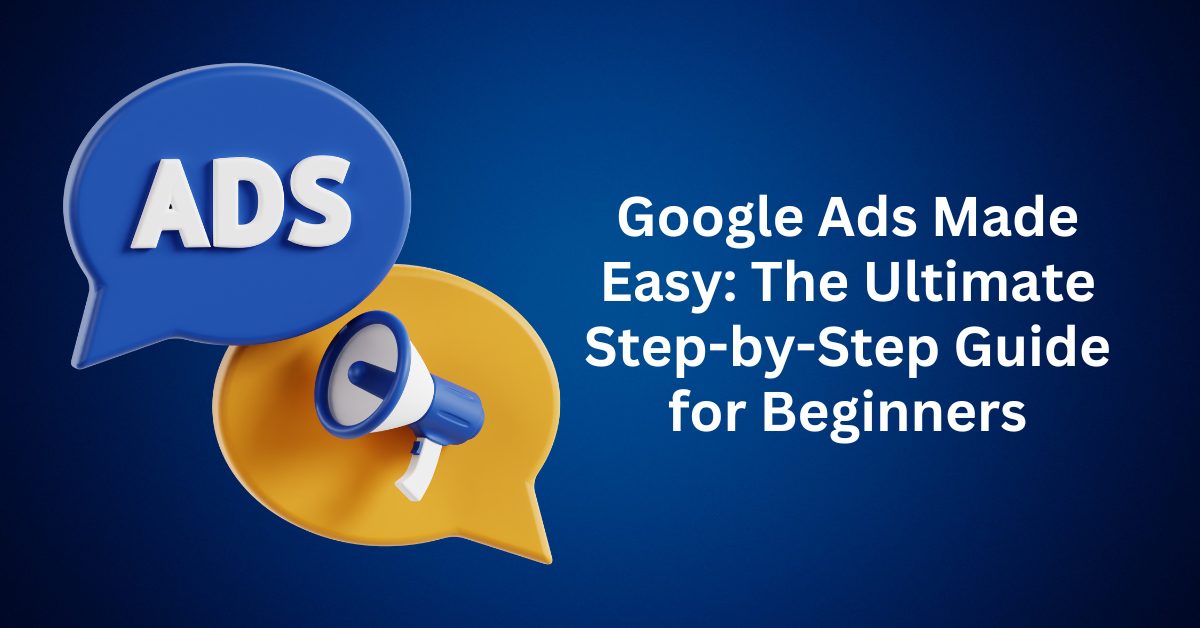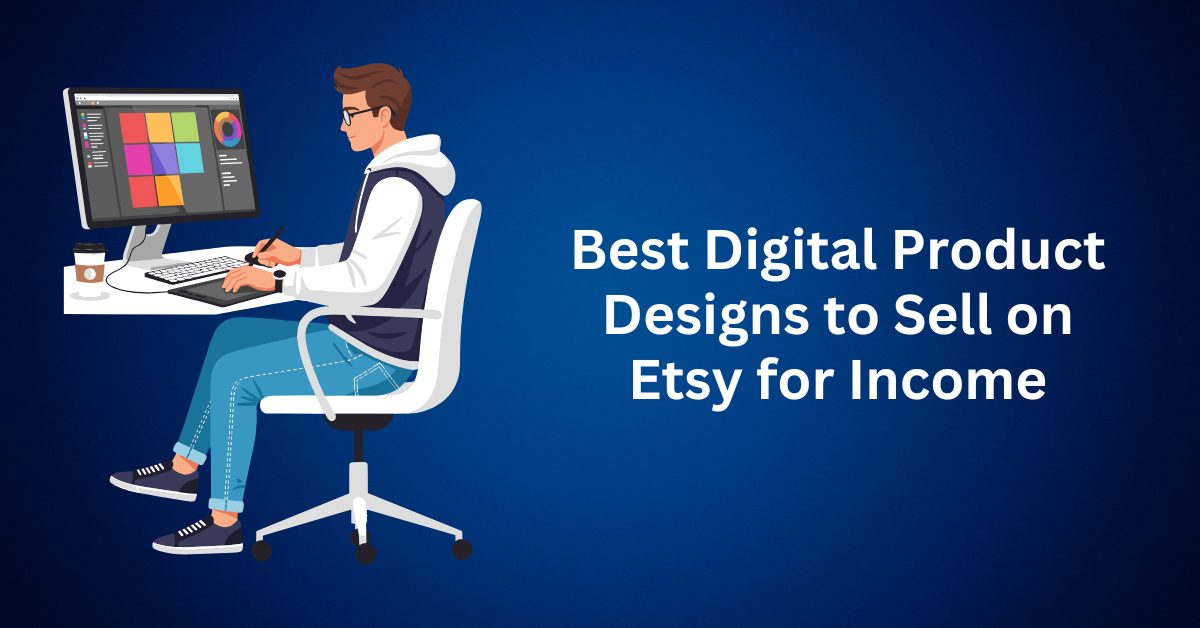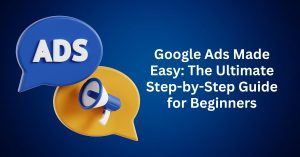Businesses across various industries are increasingly turning to blogging as a means to cultivate a lasting connection with their audience. However, there’s a notable shift in the opposite direction, where more and more bloggers are transitioning into entrepreneurs, utilizing their blogs as a springboard for business ventures. This trend is not without merit. And starting a blog is easy nowadays.
For businesses, one of the foremost hurdles is the task of building a dedicated audience for their offerings. Conversely, budding bloggers often adopt a different approach. They prioritize audience growth by consistently delivering high-quality content and subsequently exploring avenues to monetize their burgeoning traffic.
While initiating a blog is relatively straightforward, especially for those seeking a supplementary income stream, delving into innovative strategies to generate revenue as a blogger requires a strategic mindset to ensure sustained success.
This comprehensive guide offers a structured approach to kickstart and nurture a blog, transforming it into a lucrative source of both traffic and income. While it’s tailored for individuals yet to embark on their entrepreneurial journey, its insights are equally applicable to established businesses aiming to enhance their blogging.
Start Your WordPress Blog Today with an Exclusive Discount

Table of Contents
ToggleWhat is a Blog?
A blog is a website consisting of content, usually focused on a specific topic, that is regularly updated. Unlike news outlets and other publications, blogs tend to take on a personal tone, which helps as a tool for organizations (blog owners) to connect more deeply with their audiences.
People (and organizations) start blogs for all kinds of reasons, including:
- Share opinions, passions, or glimpses into their lives
- Teach others what they know
- Build an email list
- Develop their brand as an expert
- Make money online
- A combination of any or all of the above
For these reasons, blogging can be incredibly fulfilling—especially when strangers start consuming your content—but it’s also a commitment.
Whether you publish daily, weekly, or monthly, it’s important to be as consistent as possible, not just in how often you publish but also in the type of content you publish.
It’s very rare for bloggers to see results from their business or personal blog right away, so to stay motivated in the early stages, you’ll need to keep your eyes on the prize.
A blog is a unique and dynamic type of website, characterized by regularly updated content that usually revolves around a specific topic. Unlike traditional news outlets and other formal publications, blogs often adopt a personal tone, making them an excellent tool for individuals and organizations to establish a deeper connection with their audience.
Why Do People and Organizations Start Blogs?
The motivations behind starting a blog are as diverse as the bloggers themselves. Here are some of the most common reasons:
- To Share Opinions and Passions: Blogs provide a platform for expressing personal views, sharing passions, and offering a glimpse into the blogger’s life. Whether it’s travel, cooking, fashion, or technology, bloggers share what excites them.
- To Educate and Inform: Many bloggers use their platform to teach others, sharing their knowledge and expertise on a wide range of subjects. This could be anything from DIY crafts to advanced programming tutorials.
- To Build an Email List: Blogs can be an effective way to gather email subscribers. By offering valuable content, bloggers can encourage readers to sign up for newsletters, creating a direct line of communication.
- To Develop a Personal Brand: For many, a blog is a stepping stone to building a personal brand. By consistently producing high-quality content, bloggers can establish themselves as experts in their field.
- To Monetize Content: Blogging can be lucrative. Many bloggers earn money through various methods such as affiliate marketing, sponsored posts, advertising, and selling products or services.
- A Combination of the Above: Often, bloggers start with one primary goal in mind but end up pursuing a mix of these objectives as their blog evolves.
The Nature of Blogging
Blogging can be incredibly fulfilling, especially when your content resonates with readers and attracts a following. There’s a unique thrill in knowing that strangers are engaging with your words, ideas, and experiences. However, this fulfillment comes with a significant commitment.
Consistency is crucial in the world of blogging. Whether you choose to publish daily, weekly, or monthly, maintaining a regular schedule is essential. Consistency doesn’t just refer to the frequency of your posts but also to the quality and style of the content you produce. Readers come to expect a certain level of quality and relevance, and meeting these expectations is key to building and retaining an audience.
Besides, it’s important to acknowledge that seeing tangible results from a blog takes time. Rarely do bloggers achieve instant success; it often requires months or even years of consistent effort before a blog gains significant traction. During these early stages, staying motivated can be challenging.
To keep your motivation high, focus on your ultimate goals. Whether it’s building a community, establishing your authority in a niche, or creating a new income stream, keeping your eyes on the prize will help you persevere through the initial slow-growth period.
Start Your WordPress Blog Today with an Exclusive Discount
How Much Does a Blogger Make
The income of bloggers can vary widely depending on factors such as niche, audience size, monetization strategies, and level of dedication. Some bloggers earn only a modest side income, while others generate substantial revenue comparable to full-time employment or even beyond.
Many bloggers start by earning income through methods like display advertising, sponsored content, affiliate marketing, and selling digital or physical products. As their audience grows and their influence increases, they may explore additional revenue streams such as membership sites, online courses, consulting services, or speaking engagements.
While there’s no fixed salary for bloggers, surveys and reports indicate that successful bloggers can earn anywhere from a few hundred to several thousand dollars per month, and in some cases, even more.
How to start a blog
Blogging presents unique challenges, with the most daunting being the consistent generation of ideas and the allocation of time to bring those ideas to life. While getting your blog off the ground is a relatively straightforward process, maintaining momentum requires dedication and strategic planning.
Starting our guide with a focus on monetization may seem unconventional, but it is a deliberate choice. To transform your blog into a profitable one, you need to adopt an entrepreneurial mindset from the outset. This approach not only helps in identifying potential revenue streams early on but also shapes your content strategy and audience engagement efforts, laying a strong foundation for long-term success. By thinking beyond just the act of blogging and envisioning your blog as a business, you can unlock opportunities for growth and sustainability.
1. Monetize Your Blog
This might sound counterintuitive, but if your goal is to make money from blogging, you should prioritize the monetization aspect even before you start creating content. Establishing a solid monetization strategy from the outset is crucial as it influences the type of content you publish and shapes your long-term growth. Essentially, you need to approach your blog as a business rather than merely a creative outlet.
There are numerous ways to monetize your blog, and the best approach depends on the type of blog you choose to start. For instance, integrating a small business idea with your blog can create a sustainable growth path with minimal costs beyond your time and effort.
Many people assume that using services like Google AdSense is the only route to earning money through blogging. While ads can indeed generate income, they typically require substantial traffic to become economically viable. Fortunately, there are many other methods to monetize a blog quickly, without needing a massive audience. These include affiliate marketing, selling digital products or services, offering paid memberships or courses, and leveraging sponsored content. By exploring these options, you can start generating revenue early in your blogging journey.
Here are six ways to monetize:
Selling a book
A notable example of this strategy is James Clear. After years of writing a self-development blog, he authored the book Atomic Habits, leveraging the knowledge and audience he had built. This book, available in both digital and physical formats, not only made his blog economically viable but also secured him a spot on the New York Times bestsellers list.
Selling a book can provide a substantial revenue stream while establishing you as an authority in your niche.
Affiliate marketing
Affiliate marketing involves promoting a partner’s product and earning a commission for every sale made through your referral link. When implemented effectively, affiliate marketing can generate significant passive income. For instance, a blogger who writes gear reviews can attract readers interested in those products.

By including affiliate links to products on Amazon within each post, the blogger earns a commission whenever a reader purchases through one of those links. This method can be highly lucrative with the right audience and product selection.
Digital products
Creating and selling digital products, such as online courses, is another excellent way for bloggers to monetize their expertise. Successful bloggers are inherently skilled content creators, and developing courses allows them to capitalize on their knowledge.
Offering online courses on topics you are passionate about and knowledgeable in not only provides value to your audience but also establishes a steady income stream. Whether it’s an eBook, a webinar series, or a comprehensive online course, digital products can significantly enhance your blog’s profitability.
Physical products
Based on the theme and content of your blog, selling physical products that align with your brand can be a lucrative option. For example, a fashion blog could expand into a makeup brand, leveraging its established audience and reputation. By offering tangible items that resonate with your readers, you can create a new revenue stream while enhancing your brand identity.
Services
As a blogger, you likely have expertise in a specific area and strong communication skills. Monetize these strengths by offering services such as consulting, coaching, and speaking engagements. These services allow you to directly share your knowledge and experience with others, providing valuable insights while generating income.
Subscriptions
Platforms like Patreon are not just for YouTubers; they can be a powerful tool for bloggers as well. If your audience finds significant value in your content, they may be willing to pay a monthly fee for exclusive access to premium content. Subscriptions offer a steady income stream and foster a closer connection with your most dedicated readers.
The reality is that there are numerous effective ways to monetize your blog that don’t require massive daily pageviews. This is especially true if you can cultivate a loyal audience rather than just a large one.
Ultimately, your primary focus should be understanding who your audience is and how you can best serve them. By prioritizing your audience’s needs and interests, you can create a sustainable and profitable blog.
2. Pick a niche for your blog: What’s your “thing” going to be?
Today, there’s an overwhelming amount of content available on the web. With so much competition, it might seem impossible to make your blog stand out. However, there are two effective strategies to help you rise above the noise: finding a niche and creating unique, compelling content.
Discover Your Niche
One of the most crucial steps in building a successful blog is choosing a niche that is both specific and rich in content possibilities. Think of your niche as “an inch wide but a mile deep.” This means that while your topic should be narrow enough to distinguish your blog from others, it should also be broad enough to provide a wealth of content ideas over time.
Your niche will influence your blog’s name, your content strategy, and ultimately, your success. When selecting a niche, consider the following factors:
- Audience Alignment: Ensure that your chosen niche attracts a target audience that aligns with your blog’s monetization strategy. Ask yourself, “What products or services would my audience be interested in buying?” This will guide your content and marketing efforts.
- Market Demand: Research to see if there is sufficient demand for your chosen niche. Use tools like Google Trends and keyword planners to gauge interest levels.
Different Ways to Niche Down
Here are some creative ways to narrow down your blog’s focus:
- Location-Based Blogging: Center your blog around a specific geographic area. For example, a blog about living in New York City can attract locals and tourists alike.
- Segment-Specific Themes: Instead of covering broad topics, focus on a specific segment within a larger category. For instance, rather than a general food blog, create one dedicated to vegan recipes.
- Unique Delivery Style: Stand out by delivering your content in a unique style or voice. Humor, storytelling, or personal anecdotes can make your blog more engaging and relatable.
- Quality Over Quantity: Compete on the quality of your posts. Provide in-depth, well-researched articles on topics that other blogs might only skim over. This can establish you as an authority in your niche.
Sustainable Content and Monetization
Your chosen niche should not only attract an audience but also allow you to create a steady stream of content. Here’s how you can ensure sustainability and effective monetization:
- Content Ideas: A niche that is too narrow may limit your content ideas. Make sure there is enough depth in your chosen topic to keep your blog posts fresh and engaging.
- Monetization Strategies: Whether you plan to use display ads, affiliate marketing, or sell products/services, your niche should support your monetization strategy. Identify what your audience wants and tailor your monetization efforts accordingly.
Competitive Analysis
Don’t skip the competitive analysis step. Understanding your competition can help you identify gaps in the market that you can fill with your unique perspective. This involves:
- Identifying Competitors: Look at other blogs in your niche and analyze their content, style, and engagement levels.
- Finding Gaps: Look for areas where your competitors may be lacking. This could be in the depth of their content, the frequency of their posts, or the uniqueness of their voice.
- Building Your Brand: Use your findings to carve out a unique space for your blog. Your brand should reflect your unique perspective and value proposition.
3. Choose a blogging platform and template
Before you dive into writing your first blog post, it’s crucial to set up your blog hosting and content management system (CMS). This step can be a stumbling block for many new bloggers, especially if they’re unsure which platform to invest their time and money in. Your choice usually boils down to either a self-hosted or hosted blogging platform.
Let’s explore the differences and how to choose the best option for your needs.
Self-Hosted Platforms
Self-hosted platforms offer a high degree of customization and control. However, this route requires you to handle hosting yourself, which means paying a hosting company a separate monthly fee. Here are some key points to consider:
- Customization: Self-hosted platforms allow extensive customization options, giving you the freedom to design your blog exactly how you envision it.
- Cost: While there are costs involved (such as hosting fees), these platforms often offer more flexibility in the long run.
- Setup: There is an initial setup process that might be more technical, but it’s manageable with the right resources and support.
WordPress is the go-to open-source platform for those considering the self-hosted route. It’s powerful, widely used, and has a vast community for support.

Start Your WordPress Blog Today with an Exclusive Discount
Hosted Platforms
Hosted platforms, on the other hand, allow you to set up your blog quickly without the need for separate hosting arrangements. Some popular hosted platforms include:
- Shopify: Includes hosting in all its plans and is great for e-commerce blogs.
- Blogger and Wix: Offer straightforward setup processes but may limit customization options compared to self-hosted platforms.
Start Your Blog with Shopify Today – Free Trial Available
Key considerations for hosted platforms:
- Ease of Use: Hosted platforms are generally easier to set up and use, making them ideal for beginners.
- Less Technical: They do not require coding or HTML skills, allowing you to focus on content creation rather than technical setup.
- Limited Customization: Some hosted platforms may restrict customization and functionality, which could be a drawback as your blog grows.
Choosing the Right Platform
When selecting a platform for your blog, consider these essential factors:
- Ease of Use: Choose a platform that is user-friendly and doesn’t require extensive technical knowledge.
- Scalability: Ensure the platform can grow with you. As your brand matures, your traffic increases, and you have more posts to organize, you’ll need a platform that can handle these changes.
- Customization Options: Look for a platform that allows you to change the look and functionality of your site as needed.
- Ecosystem of Plugins and Apps: A healthy ecosystem of plugins and apps can significantly enhance your site’s performance, help with backups, marketing, and simplify various tasks.
During your blogging journey, you’ll likely want to update your blog’s design and functionality. Whether you’re adding new features, integrating marketing tools, or improving site performance, having a flexible platform with a robust selection of plugins and apps will make these tasks easier.
4. Choose a blog and domain name
Selecting the right domain name is a crucial step in setting up your blog. It’s more than just an address on the web. Instead, it’s your brand’s identity and can significantly impact your blog’s success. Fortunately, companies like Bluehost offer perks like a free domain name when you sign up for their hosting plans, along with a 30-day money-back guarantee if you’re not satisfied with their service.
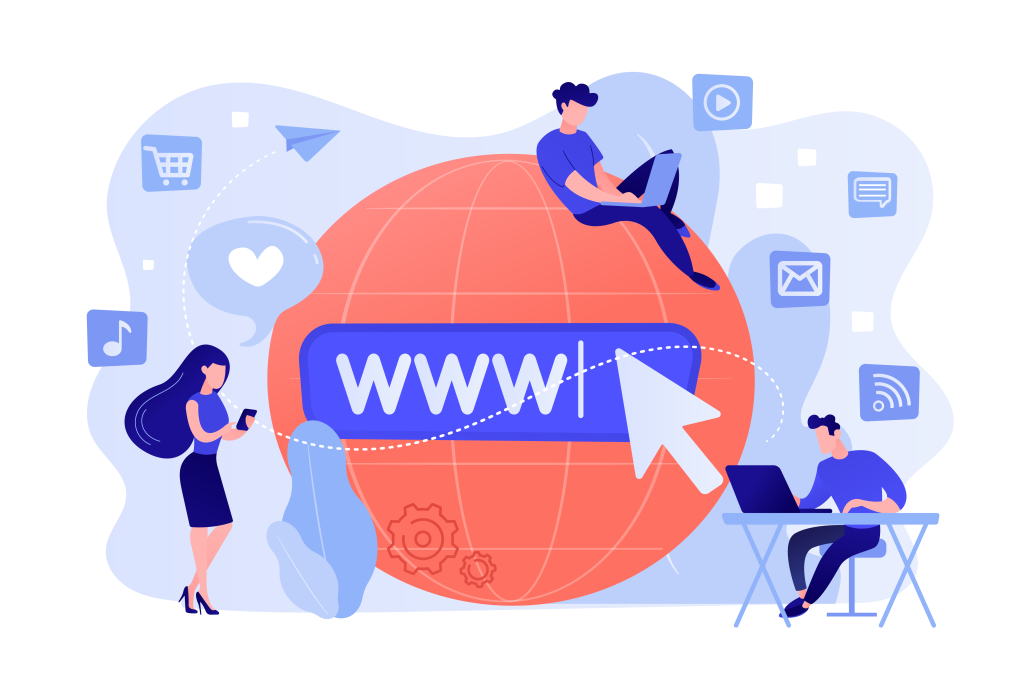
Before deciding on a domain name, think about the overall purpose and theme of your blog. If you’re creating a personal blog or portfolio site, using your name might be tempting. However, for most other types of blogs, it’s better to opt for a name that reflects your blog’s message and niche rather than your name. This approach makes it easier to build a strong, memorable brand.
Start Your WordPress Blog with Bluehost Today – Exclusive Discount Available
Tips for Choosing a Domain Name
- Memorable: Your domain name should be easy to remember. A catchy and memorable name will stick in readers’ minds, making it easier for them to return to your site.
- Fun to Say: Names that are fun to say out loud can create a positive impression and are more likely to be shared by word of mouth.
- Easy to Spell: Avoid complex or unusual spellings. If your domain name is difficult to spell, potential visitors might struggle to find your blog.
- Unique: Ensure your domain name is unique and not easily confused with other brands or websites. A unique name helps you stand out in a crowded market.
Building a blog on Shopify
Shopify is a robust hosted platform that combines an ecommerce website builder with a blogging platform. This allows you to seamlessly grow and sell both physical and digital products or services. With hundreds of plugins and apps available, Shopify helps you set up and expand your blog efficiently. Plus, you can start your journey with a free trial today!
Picking a Blog Theme on Shopify
Once you’ve signed up and settled your initial setup, the next step is to pick a blog theme. A theme is essentially a template that dictates the design, layout, and features of your website. Shopify offers a variety of great themes, many of which are available for free and can be set up with a single click. Here’s how to get started:
- Accessing Themes: In your Shopify dashboard, navigate to the Online Store tab, then select Themes.
- Choosing a Free Theme: Browse through the available free themes. These can be a good starting point, especially if you’re new to blogging and want to keep costs low.
- Considering Premium Themes: If the free options don’t meet your needs, you might want to invest in a premium theme. Although this involves a one-time fee, premium themes often offer more advanced features and customization options, significantly enhancing the user experience.
The Importance of a Good Theme
The design of your site is more than just aesthetics. Instead, it plays a critical role in user engagement and SEO. Readers often judge a site’s credibility based on its look and feel within seconds of landing on it. A well-designed theme can make your blog more inviting and easier to navigate, which can lead to better engagement metrics and higher search engine rankings.
With quick load times, soft colours, and playful illustrations, it captures the interests of readers who enjoy arts and crafts and design. On the other hand, a poorly designed website can frustrate visitors, leading them to leave without engaging with your content.
Enhancing Your Blog with Shopify Apps
To further enhance your blog’s functionality, Shopify offers several apps that can be integrated into your site. Here are a few recommended ones:
- Blog Studio: This app allows you to spruce up your blog posts with a drag-and-drop article builder, making it easier to create visually appealing and structured content.
- Yoast SEO for Shopify: Improve your website’s SEO with this powerful tool, helping you optimize your content and structure to rank higher in search engine results.
Building on WordPress
For new bloggers, a self-hosted WordPress blog is an excellent place to start. While WordPress.com offers a free blogging platform, using WordPress.org for a self-hosted blog provides more flexibility and control over your site. However, you will need to pay for hosting and your domain name, similar to how you would with Shopify.
Start Your WordPress Blog Today with an Exclusive Discount
Setting Up Your Self-Hosted WordPress Blog
- Choose a Hosting Provider: One of the most popular choices is Bluehost. When you sign up for a Bluehost account, you can automatically install WordPress from your hosting dashboard.
- Install WordPress: Bluehost makes the installation process simple. Once your hosting account is set up, look for the option to install WordPress directly from your dashboard.
- Name Your Site: Once redirected, click “Name your site,” fill in your information, and click “Save settings.”
- Choose Your Theme:
- Free Themes: In your WordPress dashboard, go to the Appearance tab in the sidebar to explore free themes.
- Premium Themes: If you have a budget, consider purchasing a premium theme from marketplaces like ThemeIsle or ThemeForest. To install an external theme, navigate to Appearance > Themes, and click “Install theme.”
Enhancing Your Blog with WordPress Plugins
Plugins are essential for extending the functionality of your WordPress blog. Here are a few recommendations:
- SEO Plugins: Use plugins like Yoast SEO to optimize your blog posts for search engines.
- Marketing Plugins: Consider plugins that help with email marketing, social sharing, and analytics to grow your audience and track your blog’s performance.
Turning Your WordPress Blog into an Ecommerce Site
If you want to sell products on your WordPress blog, the Shopify Buy Button is a fantastic tool. It allows you to integrate ecommerce functionality into your blog seamlessly. Here’s how to get started:
- Set Up Shopify: Sign up for a Shopify account if you haven’t already.
- Create Your Product: Add the products you want to sell through Shopify.
- Install the Buy Button: Use the Shopify Buy Button to embed product listings on your WordPress site. This integration is straightforward and allows you to start selling with just a few clicks.
5. Plan your publishing strategy
Every blogger must maintain a steady stream of ideas, ideally through proactive planning to prevent creative droughts. Crafting a content calendar serves as your compass, ensuring both idea management and personal accountability. Your content calendar should encompass:
- Type of content you’re producing
- Target audience(s)
- Distribution channels and release dates
While a basic spreadsheet suffices, more robust tools like Trello, Airtable, or Asana streamline the content organization. Considering your content mix is equally crucial, providing insight into your blog’s breadth and potential categories or tags for future organization.
Some types of blog posts to include are:
Evergreen content
Evergreen content stands as the timeless cornerstone of your content strategy, its enduring relevance earning it the name. These pieces, often in the form of informative articles, retain their value without frequent updates. They delve into subjects that transcend the fleeting nature of news cycles, providing lasting educational value to your audience.
Topical content
On the flip side, topical content seizes the pulse of current trends and events, riding the wave of public interest. These blog posts, when crafted with a unique angle, have the potential to spark rapid growth across social channels. However, relying solely on topical content for consistent traffic is akin to standing on shifting sands, as its relevance can swiftly diminish over time.
Curated content
Curated content serves as a complementary force in your content arsenal, offering readers a curated selection of valuable insights from across the web. By weaving these external resources into your narrative, you not only enrich your content but also cater to the diverse interests and values of your audience.
Feature pieces
Feature pieces add depth and personality to your content landscape, particularly through the art of the interview. These narratives transcend mere information dissemination, drawing readers into the captivating lives and minds of remarkable individuals. Through interviews with notable figures, you not only establish authority but also leverage their credibility to enhance your own.
Visual content
Visual content injects vibrancy and allure into your blog, capturing attention and enhancing comprehension. Incorporating videos, original images, and graphics not only enriches your content but also earns favour with search engines, boosting your visibility and engagement.
Interactive content
Interactive content, such as quizzes, elevates audience engagement to new heights, offering insights beyond mere page views. These interactive elements not only prolong the time spent on your page but also unveil deeper layers of audience preferences and behaviours.
To maintain a steady cadence of content publication, meticulous planning is key. Strategically map out your blog posts at least a month in advance, ensuring a consistent schedule that nurtures audience anticipation. Flexibility is crucial, allowing room for impromptu feature stories to be seamlessly integrated when the need arises.
Writing Your First Blog Post
Before getting into the writing process, first, start by crafting an outline for your blog post. While some may be tempted to skip this step, creating an outline serves as a roadmap, ensuring all key points are covered. It not only helps incorporate relevant keywords but also frees your mind from the destination. Hence, it allows you to focus wholeheartedly on the journey of crafting compelling content.
Once you’ve completed your draft, pause before hitting the publish button. Take a moment to perform some essential pre-publishing tasks:
- Edit your work: While tools like Grammarly can assist in catching syntax and grammar errors, nothing beats the keen eye of a human editor. You can also collaborate with an editor to help refine your prose and provide valuable insights to elevate your blog posts to the next level.
- Organize with headings: Break up your blog post with clear and concise headings. Subheadings not only enhance the readability of your content but also make it more scannable and approachable for readers, guiding them through the narrative effortlessly.
- Craft compelling headlines and social sharing images: The headline and accompanying image are the gateway to your blog post. While avoiding clickbait tactics, strive to create captivating headlines and visually appealing images that entice readers on social media feeds. Crafting headlines and images that stand out amidst the digital noise is crucial for garnering attention and inspiring curiosity, driving engagement with your content.
Lastly, it’s essential to maintain perspective on audience growth. Building a thriving readership doesn’t happen overnight. Expect a mix of successes and setbacks along the way. However, perseverance is key. Continuously creating and sharing quality content is the foundation for sustainable audience growth.
6. Get people to read your blog consistently
When starting a blog and aiming to garner quick momentum, it’s crucial to strategize beforehand rather than solely focusing on audience growth post-publishing. Distribution poses a significant challenge for many bloggers, primarily due to the absence of a well-defined, replicable distribution strategy integrated into their publishing workflow.
The act of publishing a new blog entry is inherently anxiety-inducing, and extending its reach only exacerbates this apprehension. While the fear of amplifying reach gradually diminishes with time, addressing the lack of a solid distribution strategy demands thoughtful consideration and an initial investment of time before launch.
To navigate this process effectively, it’s essential to explore various approaches for planning growth and maximizing the impact of each blog post.
Start collecting emails as soon as possible.
Regardless of the blogging platform you choose, prioritizing the growth of your email subscriber list is crucial. Each new subscriber signifies validation of your content and represents a potential loyal reader you can engage with effortlessly.
Your email list is a valuable asset that remains with you regardless of platform changes or new ventures. However, simply having a subscriber list isn’t sufficient. Instead, you must actively collect emails at every opportunity, and contact forms are instrumental.
A highly effective practice is integrating contact forms seamlessly into your content or homepage, accompanied by compelling calls to action prompting visitors to subscribe. Consider utilizing exit pop-ups to capture the attention of abandoning visitors and convert them into valuable subscribers.
Numerous email marketing platforms offer user-friendly tools for creating and deploying these forms. Additionally, you can create a dedicated contact page and generate a link to it, which can be strategically placed within your blog posts, social media profiles, and email signatures to further expand your subscriber base.
Remember, if you don’t ask, people won’t subscribe. Make the subscription process effortless and straightforward for your audience. Implementing automation for sending new blog posts to your email list can streamline this process once you’ve established your workflow.
Brainstorm opportunities to go after search engine traffic
Keyword research is a powerful tool for gaining insights into the search volume within your blog niche. By identifying popular search queries, you can gauge the level of demand for specific topics and potentially attract more traffic over the long term.
A convenient method for conducting keyword research is through platforms like Ubersuggest. By inputting relevant search terms from your audience’s perspective, you can uncover valuable blog post ideas. Focus on queries that begin with phrases like “how to” or “best,” as these often indicate areas of high interest.
For instance, utilizing UberSuggest’s keyword research interface might reveal a significant monthly search volume for a term like “how to tie a tie.” This suggests a considerable demand for content related to this topic among your target audience.
Even if your content doesn’t secure a top-ranking position on search engine results pages, you’ll still have a content idea with proven demand. However, if you aspire to achieve greater visibility, delving deeper into SEO techniques can be beneficial.
For those operating on platforms like Shopify, leveraging tools such as the free SEO checker app can be invaluable for optimizing each blog post. By fine-tuning your content according to SEO best practices, you can increase the likelihood of ranking higher in search engine results and attracting more organic traffic to your blog.
Set up your social media strategy.
When promoting your new blog, it may seem tempting to spread your efforts across every social media platform available. However, managing multiple platforms can become overwhelming and may not yield optimal results. Instead, prioritize channels where your target audience is most active. Consider where they congregate, whether it’s specific communities, forums, or popular social media platforms like TikTok or Facebook.
Tailor your marketing strategy to align with the preferences of your audience and the nature of your niche. For instance, if your blog revolves around visual content or DIY projects, platforms like Instagram or Pinterest might be more suitable for showcasing your content effectively.
Furthermore, don’t overlook the power of your networks. Your friends and family can serve as valuable early supporters as you embark on your blogging journey. Their feedback and engagement can provide invaluable insights and momentum in the initial stages of building your blog’s audience.
Reduce, reuse, and resurface your content.
Creating extensive and unique blog posts every day can be a daunting task. Savvy bloggers understand the importance of repurposing and reusing content to maximize its impact.
Here are some strategies and blog post ideas to help you get the most mileage out of your content:
- Roundup Posts: Compile a collection of your past blog posts that share a common theme. For example, create a post titled “Our Best Posts of [YEAR]” to showcase top content and provide readers with a convenient way to explore related topics.
- Content Repurposing: Transform your existing blog posts into other formats to appeal to different audiences. Consider converting articles into visually engaging infographics or interactive quizzes to enhance engagement and reach.
- Content Refreshing: Periodically revisit and update older blog posts, particularly those with evergreen content or seasonal relevance. Republishing updated content can improve its visibility in search engine results and attract new readers. For instance, refresh a post like “10 Lazy Halloween Costume Ideas” to capitalize on seasonal trends.
- Guest Blogging: Once you’ve built a following, invite guest authors to contribute to your blog. Guest posts not only provide fresh perspectives but also enable cross-promotion as authors share their content with their audiences.
- Internal Linking: Enhance the discoverability of your content by strategically incorporating links to related posts within your articles. Additionally, consider utilizing tools like the free Related Blog Posts app on Shopify to automate the process and provide readers with additional reading options.
- Podcast Appearances: Expand your reach by appearing as a guest on podcasts relevant to your niche. Discussing topics you’ve previously written about on your blog allows you to repurpose your expertise and reach new audiences through a different medium.
Understand analytics to understand your audience.
Hidden within the data of your blog lie valuable opportunities waiting to be unearthed. Whether you’re running a WordPress blog or managing a storefront on Shopify, integrating Google Analytics into your site is essential—and fortunately, it’s free.
With Google Analytics, you gain access to a wealth of insights that can empower your blogging efforts. Discover metrics such as the average time spent perusing your posts, the quality of traffic originating from various sources, and even real-time visitor data.
Beyond merely tracking metrics, data serves as a powerful tool for bloggers. The ability to demonstrate the volume and quality of traffic your blog attracts can significantly enhance your credibility and attractiveness to potential collaborators or advertisers.
For instance, armed with concrete data showcasing your blog’s reach and engagement levels, you’re better positioned to negotiate partnerships or sponsorship deals. Moreover, the ability to provide evidence-backed insights into your audience’s demographics and behaviours adds substantial value to your offerings.
In essence, harnessing the insights gleaned from Google Analytics not only enhances your understanding of your audience but also strengthens your position within the blogging ecosystem. By leveraging data effectively, you can unlock new opportunities for growth, collaboration, and monetization for your blog.
Final Thoughts: How To Start a Blog and Grow Your Audience
No matter if you’re just dipping your toes into the blogging waters or if you’re a seasoned pro, the key to a thriving blog lies in your audience. Whether they’re first-time visitors or loyal followers, they hold the power to propel your blog to success. To increase your traffic and turn your passion into profit, prioritize nurturing and expanding this audience while consistently churning out fresh content.
Delve deeper into the world of monetizing your blog by exploring a wealth of resources and success stories. These invaluable insights and firsthand experiences will illuminate the path to profitability in the blogosphere.

